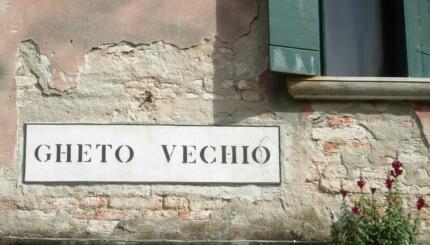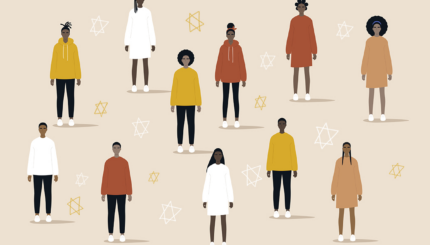Chapters in American Jewish History are provided by the American Jewish Historical Society, collecting, preserving, fostering scholarship and providing access to the continuity of Jewish life in America for more than 350 years (and counting). Visit www.ajhs.org.
Social worker Minnie Low has been called “the Jane Addams of the Jews.” Comparison with the founder of Chicago’s renowned Hull House–perhaps the best-known settlement house serving immigrants in early twentieth-century America–while flattering to Low, disguises the difference between the two women.
Unlike the more privileged Addams, Low was born in New York to poor immigrant Jewish parents who moved to Chicago when Minnie was ten years old. Addams attended college and medical school, and could afford to serve unpaid in her various leadership roles. By contrast, because of illness, Low dropped out of public high school and never completed her formal education. She remained single and had to support herself through a paid career in social work. Addams’s involvement with the poor, while certainly admirable, stemmed from a patrician sense of noblesse oblige and a Christian sense that her personal salvation lay in the doing of good deeds. Low was motivated by a sense of solidarity with her fellow Jews, particularly those who emigrated from Russia. Both women were pioneers in American social work, but it is Low’s ideas, and not Addams’, that currently dominate social welfare thinking.
Born in 1867, Minnie Low’s calling to Jewish social service initially began in 1893, in the depths of a great national economic depression. That year, Low helped found the Maxwell Street Settlement House in the heart of Chicago’s immigrant Jewish ghetto. Low and Addams became friends at that time; in fact, the meetings that led to the establishment of the Maxwell Street Settlement were held at Hull House.
The dominant mode of settlement house work established by Jane Addams focused mainly on giving the immigrants recreational, cultural, and social opportunities–exposure to music, art, crafts, and the English language–rather than practical skills in the marketplace. By contrast, Low believed that charity should be less cultural and more “scientific.” She wanted philanthropy to foster the eventual economic independence and moral character of its recipients. To borrow a popular metaphor, rather than feeding the poor a fish dinner, Low’s scientifically-targeted philanthropy tried to provide them with fishing rods and fishing lessons so they could learn to feed themselves.
Low put her ideas to work in 1897, when the recently formed National Council of Jewish Women appointed her director of its Seventh Ward Bureau in Chicago, later renamed the Bureau of Personal Service. The bureau’s mission was to help the city’s Jewish immigrants secure housing, medical care, legal assistance, and credit. Low instructed the bureau’s employees not simply to dispense alms to their clients, but to help them take responsibility for finding their own jobs. She encouraged middle-class women to become “friendly visitors” in the homes of the poor and provide them with mentoring and encouragement rather than handouts. Her agency created a workroom that employed Jewish immigrants and paid them in coal, secondhand shoes, and clothing.

Help us keep Jewish knowledge accessible to millions of people around the world.
Your donation to My Jewish Learning fuels endless journeys of Jewish discovery. With your help, My Jewish Learning can continue to provide nonstop opportunities for learning, connection and growth.
(Image to the left: Tzedakah box. Courtesy of American Jewish Historical Society.)
Low believed strongly in the American Jewish communal practice of providing interest-free loans, rather than charity, to those in need. In 1897, Low tested her beliefs by creating the Woman’s Loan Association. Starting with a treasury of $87, by 1918 the organization distributed $33,000 per year in interest-free loans, primarily to Jewish immigrants who used them to establish or sustain small businesses. Historian Shelly Tenenbaum quotes an essay Low wrote in 1905:
Loan a small amount to a man struggling for existence . . . [give] him some time to repay the loan in installments [and he will do so] without flinching, and without shirking his responsibility. . . What greater proof do we require that undaunted courage, ambition, honor and manliness are virtues of the poor?
Low made several innovative contributions to the Chicago social welfare system. With Judge Julian Mack, Jane Addams, and others, she helped organize the Juvenile Court of Chicago (1899), the first separate juvenile justice system in America. She also established the Juvenile Protective Association, an organization devoted to delinquency prevention. Low was active in Chicago’s Central Bureau of Jewish Charities, the Home for Jewish Friendless, and the Jewish Finding Home Society, an adoption bureau for children without families. Low was also active in attempts to suppress the white slave trade, a serious threat to the lives of poor Jewish girls. In 1914, her colleagues recognized her tireless efforts by electing her president of the National Conference of Jewish Charities. She used the position to advocate for the improved status of women social workers in Jewish communal service.
Low’s name is little remembered today, but her belief that Jewish charity should provide the poor with the tools to work rather than simply encouraging their dependency on handouts makes her an intellectual forerunner of today’s leading welfare reform theorists. Her notion of scientific tzedakah foreshadows the current emphasis on moving recipients off welfare rolls and onto payrolls.


